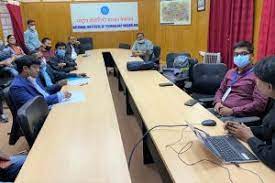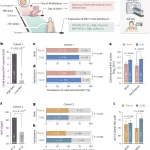August 7, 2024
Obesity rates in the United States have surged over the past two decades, affecting adults across various racial and ethnic groups. However, a new study highlights a significant disparity: Non-Hispanic Black, Hispanic, and American Indian or Alaska Native adults experience higher obesity rates compared to their White and Asian counterparts. Additionally, individuals with lower incomes are disproportionately affected by obesity compared to those with higher incomes.
A recent paper published in Current Obesity Reports sheds light on these disparities, examining how social and structural determinants of health contribute to the obesity epidemic. The study, conducted by a team from George Mason University’s College of Public Health, delves into how social injustices and systemic inequities impact obesity risk, treatment, and outcomes.
The paper, titled “Social and Structural Determinants of Health and Social Injustices Contributing to Obesity Disparities,” underscores the role of social determinants such as living conditions, access to healthy food, and healthcare in driving obesity disparities. Co-author Sheila J. McKinney from Jackson State University joins George Mason University’s Michelle S. Williams and Lawrence Cheskin in highlighting the need for targeted interventions to address these issues.
“Social determinants of health, such as the environment in which people live and the availability of healthy food, are crucial drivers of obesity disparities,” said Michelle S. Williams, associate professor of community and global health. “Many of these determinants can be modified through effective interventions aimed at reducing obesity.”
Lawrence Cheskin, professor of nutrition and food studies, emphasized the importance of equity-focused, population-based interventions. “To reduce obesity disparities and improve health outcomes among marginalized groups, we need to address the root causes of these disparities through targeted public health initiatives,” Cheskin said.
Successful interventions include community-based efforts to enhance neighborhood conditions, promote healthy eating habits, expand access to obesity treatment, and create safe spaces for physical activity. However, Williams notes that despite these promising strategies, there is a pressing need for broader and more comprehensive programs at local, state, and national levels.
“Public health workers alone cannot achieve these necessary changes,” Williams added. “Policymakers must integrate strategies and funding into their policies to address the social and structural determinants of health.”
The research team reviewed literature from the past five years on how social and structural factors affect obesity among minoritized and marginalized adults in the U.S. They found that factors such as access to healthy food, health insurance, safe spaces for physical activity, and supportive policies play significant roles in shaping obesity risk.
For more information, see Michelle S. Williams et al., “Social and Structural Determinants of Health and Social Injustices Contributing to Obesity Disparities,” Current Obesity Reports (2024). DOI: 10.1007/s13679-024-00578-9.












